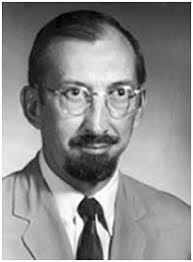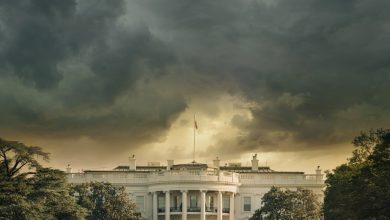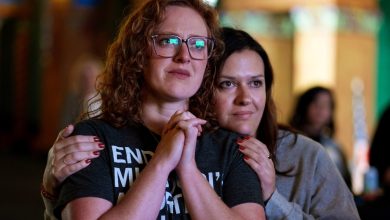Fulkerson Prize | Gödel’s Lost Letter and P=NP

The Fulkerson prize is given to: outstanding papers in the area of discrete mathematics and is sponsored jointly by the Mathematical Optimization Society (MOS) and the American Mathematical Society (AMS). Up to three awards of \$1,500 each are presented at each (triennial) International Symposium of the MOS.
This year:
* Ben Cousins and Santosh Vempala for Gaussian cooling and $O^{*}(n^{3})$ algorithms for volume and Gaussian volume.
* Zilin Jiang, Jonathan Tidor, Yuan Yao, Shengtong Zhang, and Yufei Zhao for Equiangular lines with a fixed angle.
* Nathan Keller and Noam Lifshitz for The junta method for hypergraphs and the Erdos—Chvatal simplex conjecture.
Originally, the prizes were paid out of a memorial fund administered by the AMS that was established by friends of the late Delbert Ray Fulkerson (1924-1976) to encourage mathematical excellence in the fields of research exemplified by his work.
Previous Prizes
1979:
* Richard M. Karp for classifying many important NP-complete problems.
* Kenneth Appel and Wolfgang Haken for the four color theorem.
* Paul Seymour for generalizing the max-flow min-cut theorem to matroids.
1982:
* D.B. Judin, Arkadi Nemirovski, Leonid Khachiyan, Martin Grotschel, Laszlo Lovasz and Alexander Schrijver for the ellipsoid method in linear programming and combinatorial optimization.
* G. P. Egorychev and D. I. Falikman for proving van der Waerden’s conjecture that the matrix with all entries equal has the smallest permanent of any doubly stochastic matrix.
1985:
* Jozsef Beck for tight bounds on the discrepancy of arithmetic progressions.
* H. W. Lenstra Jr. for using the geometry of numbers to solve integer programs with few variables in time polynomial in the number of constraints.
* Eugene M. Luks for a polynomial time graph isomorphism algorithm for graphs of bounded maximum degree.
1988:
* Eva Tardos for finding minimum cost circulations in strongly polynomial time.
* Narendra Karmarkar for Karmarkar’s algorithm for linear programming.
1991:
* Martin E. Dyer, Alan M. Frieze and Ravindran Kannan for random-walk-based approximation algorithms for the volume of convex bodies.
* Alfred Lehman for 0,1-matrix analogues of the theory of perfect graphs.
* Nikolai E. Mnev for Mnev’s universality theorem, that every semialgebraic set is equivalent to the space of realizations of an oriented matroid.
1994:
* Louis Billera for finding bases of piecewise-polynomial function spaces over triangulations of space.
* Gil Kalai for making progress on the Hirsch conjecture by proving subexponential bounds on the diameter of d-dimensional polytopes with n facets.
* Neil Robertson, Paul Seymour and Robin Thomas for the six-color case of Hadwiger’s conjecture.
1997:
* Jeong Han Kim for finding the asymptotic growth rate of the Ramsey numbers R(3,t).
2000:
* Michel X. Goemans and David P. Williamson for approximation algorithms based on semidefinite programming.
* Michele Conforti, Gerard Cornuejols, and M. R. Rao for recognizing balanced 0-1 matrices in polynomial time.
2003:
* J. F. Geelen, A. M. H. Gerards and A. Kapoor for the GF(4) case of Rota’s conjecture on matroid minors.
*Bertrand Guenin for a forbidden minor characterization of the weakly bipartite graphs (graphs whose bipartite subgraph polytope is 0-1).
*Satoru Iwata, Lisa Fleischer, Satoru Fujishige, and Alexander Schrijver for showing submodular minimization to be strongly polynomial.
2006:
* Manindra Agrawal, Neeraj Kayal and Nitin Saxena, for the AKS primality test.
* Mark Jerrum, Alistair Sinclair and Eric Vigoda, for approximating the permanent.
* Neil Robertson and Paul Seymour, for the Robertson—Seymour theorem showing that graph minors form a well-quasi-ordering.
2009:
* Maria Chudnovsky, Neil Robertson, Paul Seymour, and Robin Thomas, for the strong perfect graph theorem.
* Daniel A. Spielman and Shang-Hua Teng, for smoothed analysis of linear programming algorithms.
* Thomas C. Hales and Samuel P. Ferguson, for proving the Kepler conjecture on the densest possible sphere packings.
2012:
* Sanjeev Arora, Satish Rao, and Umesh Vazirani for improving the approximation ratio for graph separators and related problems
* Anders Johansson, Jeff Kahn, and Van H. Vu for determining the threshold of edge density above which a random graph can be covered by disjoint copies of a given smaller graph.
* Laszlo Lovasz and Balazs Szegedy for characterizing subgraph multiplicity in sequences of dense graphs.
2015:
* Francisco Santos Leal for a counter-example of the Hirsch conjecture.
2018:
* Robert Morris, Yoshiharu Kohayakawa, Simon Griffiths, Peter Allen, and Julia Bottcher for The chromatic thresholds of graphs
* Thomas Rothvoss for his work on the extension complexity of the matching polytope.
2021:
* Bela Csaba, Daniela Kuhn, Allan Lo, Deryk Osthus, and Andrew Treglown for Proof of the 1-factorization and Hamilton decomposition conjectures.
* Jin-Yi Cai and Xi Chen for Complexity of Counting CSP with Complex Weights.
*Ken-Ichi Kawarabayashi and Mikkel Thorup for Deterministic Edge Connectivity in Near-Linear Time.
Open Problems
Congrats to Ben and Santosh again. Wonderful.



